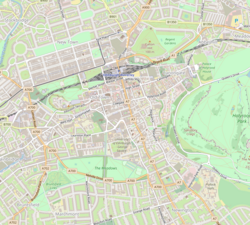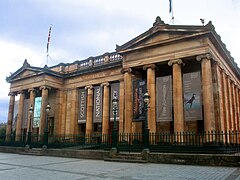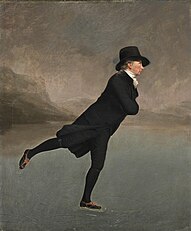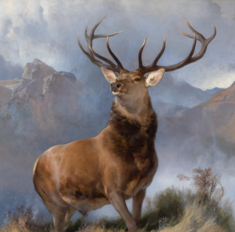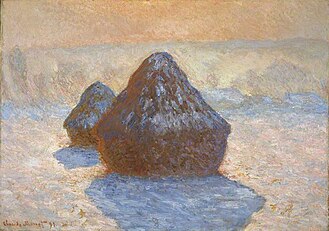
The National Gallery is an art museum in Trafalgar Square in the City of Westminster, in Central London, England. Founded in 1824, in it houses a collection of more than 2,300 paintings dating from the mid-13th century to 1900. The current Director of the National Gallery is Gabriele Finaldi.

Sir Henry Raeburn was a Scottish portrait painter. He served as Portrait Painter to King George IV in Scotland.
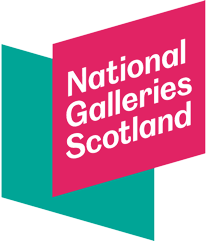
National Galleries Scotland is the executive non-departmental public body that controls the three national galleries of Scotland and two partner galleries, forming one of the National Collections of Scotland.
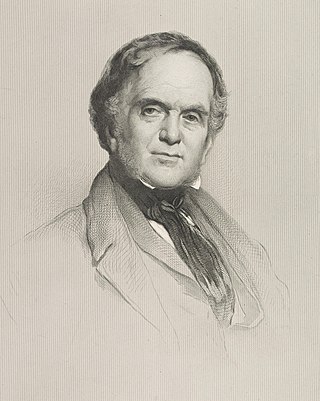
William Henry PlayfairFRSE was a prominent Scottish architect in the 19th century who designed the Eastern, or Third, New Town and many of Edinburgh's neoclassical landmarks.

The Royal Scottish Academy building, the home of the Royal Scottish Academy, is an art museum in Edinburgh, Scotland. It is situated at the junction of The Mound and Princes Street in the centre of the city. It was built by William Henry Playfair in 1822-6. Along with the adjacent National Gallery of Scotland, their neo-classical design helped to transform Edinburgh into the cityscape known as "the Athens of the North". Today the structure is a Category A listed building.

National Galleries Scotland: Portrait is an art museum on Queen Street, Edinburgh. Portrait holds the national collections of portraits, all of which are of, but not necessarily by, Scots. It also holds the Scottish National Photography Collection.

National Galleries Scotland: Modern is part of National Galleries Scotland, which is based in Edinburgh, Scotland. The Modern houses the collection of modern and contemporary art dating from about 1900 to the present in two buildings, Modern One and Modern Two, that face each other on Belford Road to the west of the city centre.

The Royal Scottish Academy (RSA) is the country’s national academy of art. It promotes contemporary Scottish art.
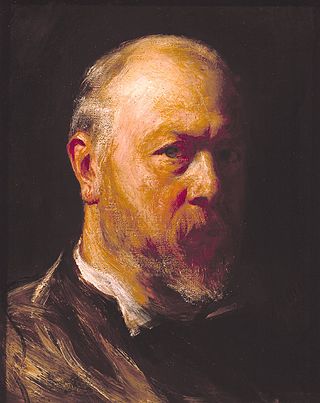
John Pettie was a painter from Edinburgh who spent most of his career in London. He became a member of the Royal Academy in 1866 and a full academician in 1874.

Diana and Callisto is a painting completed between 1556 and 1559 by the Italian late Renaissance artist Titian. It portrays the moment in which the goddess Diana discovers that her maid Callisto has become pregnant by Jupiter. The painting was jointly purchased by the National Gallery and the Scottish National Gallery for £45 million in March 2012. Along with its companion painting Diana and Actaeon it is displayed on an alternating basis between London and Edinburgh. There is a later version by Titian and his workshop in the Kunsthistorisches Museum in Vienna.

George Watson was a Scottish portrait painter and the first president of the Royal Scottish Academy.
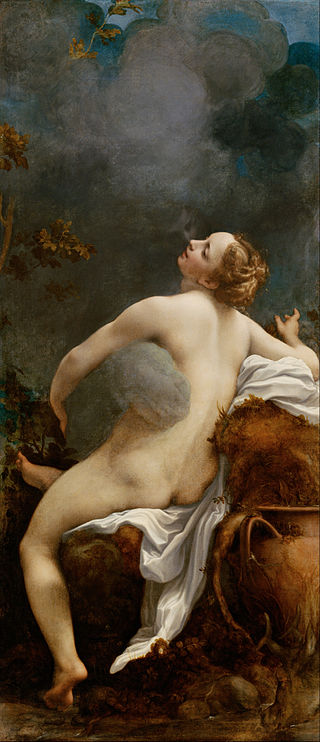
The Orleans Collection was a very important collection of over 500 paintings formed by Philippe d'Orléans, Duke of Orléans, mostly acquired between about 1700 and his death in 1723. Apart from the great royal-become-national collections of Europe it is arguably the greatest private collection of Western art, especially Italian, ever assembled, and probably the most famous, helped by the fact that most of the collection has been accessible to the public since it was formed, whether in Paris, or subsequently in London, Edinburgh and elsewhere.
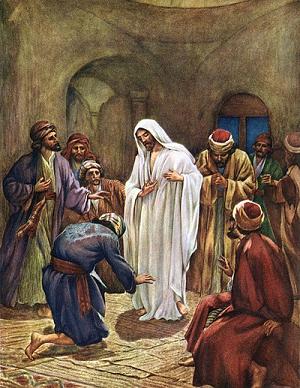
William Brassey Hole was a Scottish Victorian painter, illustrator, etcher, and engraver, known for his industrial, historical and biblical scenes.

Charles Lees was a Scottish portrait painter who also specialised in sporting and recreational subjects.

Alexander Carse was a Scottish painter known for his scenes of Scottish life. His works include a large canvas of George IV's visit to Leith and three early paintings of football matches.

John Hutchison was a Scottish sculptor based in Edinburgh. He was the son of an unnamed builder, and his artistic life began as a thirteen-year-old woodcarving apprentice. He attended art school in the evenings, then later became a student at the Trustees Academy. and attracted the patronage of its owner, Patrick Allan Fraser, who gave him commissions to fund his study in Rome. Although after Rome he continued to enjoy ancient Roman sculptural themes, he remained in Edinburgh for the rest of his life, working in wood, clay and marble, and concentrating on portraiture of Scottish people, and images of Scottish myth and history. He created the bust of Sir Walter Scott in Poets' Corner in Westminster Abbey. He was a successful artist who received commissions from Queen Victoria.
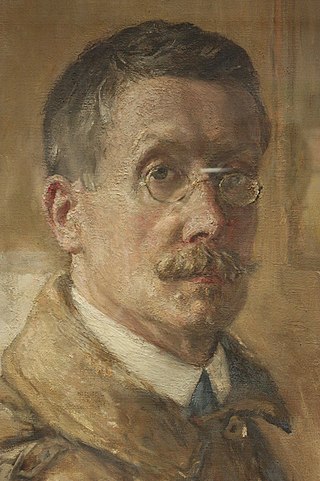
Alexander Ignatius Roche RSA NEAC RP was a Scottish artist in the late 19th century and an important figure in the "Glasgow Boys".
Sir James Lewis Caw LLD HRSA was a Scottish art historian, critic and gallery director. He argued for the existence of an independent and free-standing "Scottish school of painting" arising in the second half of the 19th century.
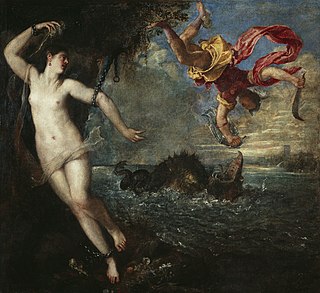
Perseus and Andromeda is a painting by the Italian Renaissance artist Titian, now in the Wallace Collection in London. It was painted in 1554–1556 as part of a series of mythological paintings called "poesie" ("poetry") intended for King Philip II of Spain. The paintings took subjects from the Roman poet Ovid's Metamorphoses, in this case Book IV, lines 663–752, and all featured female nudes.

William John Thomson (1771–1845) was an American-born painter of silhouettes, portraits and miniatures who was active in Great Britain.


